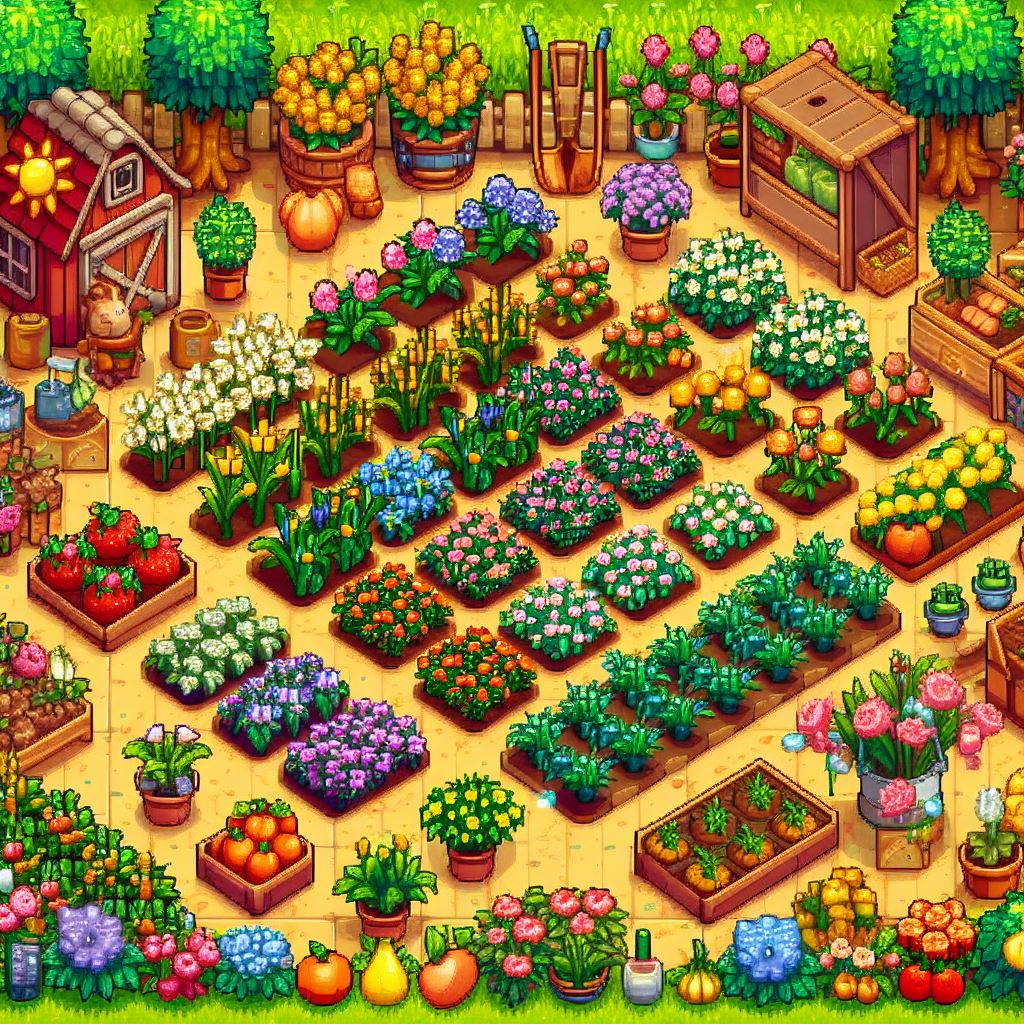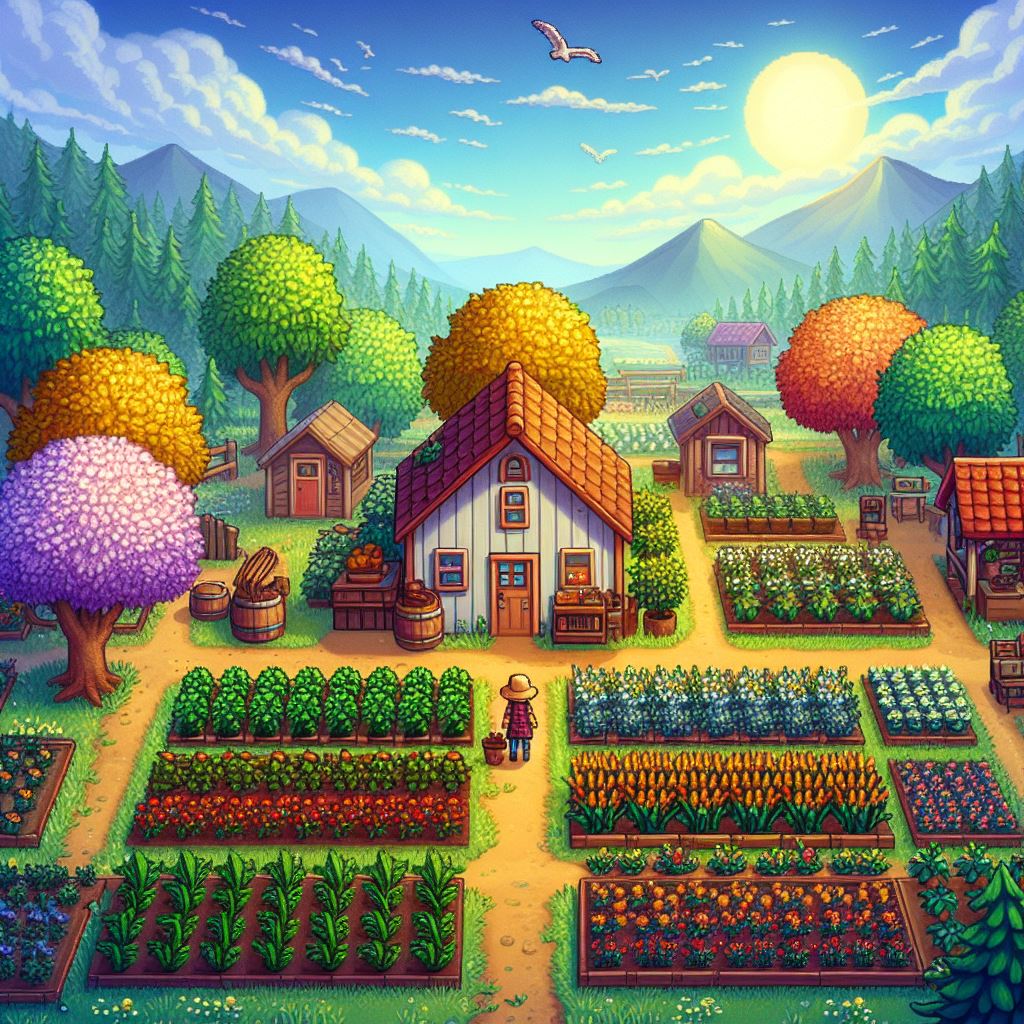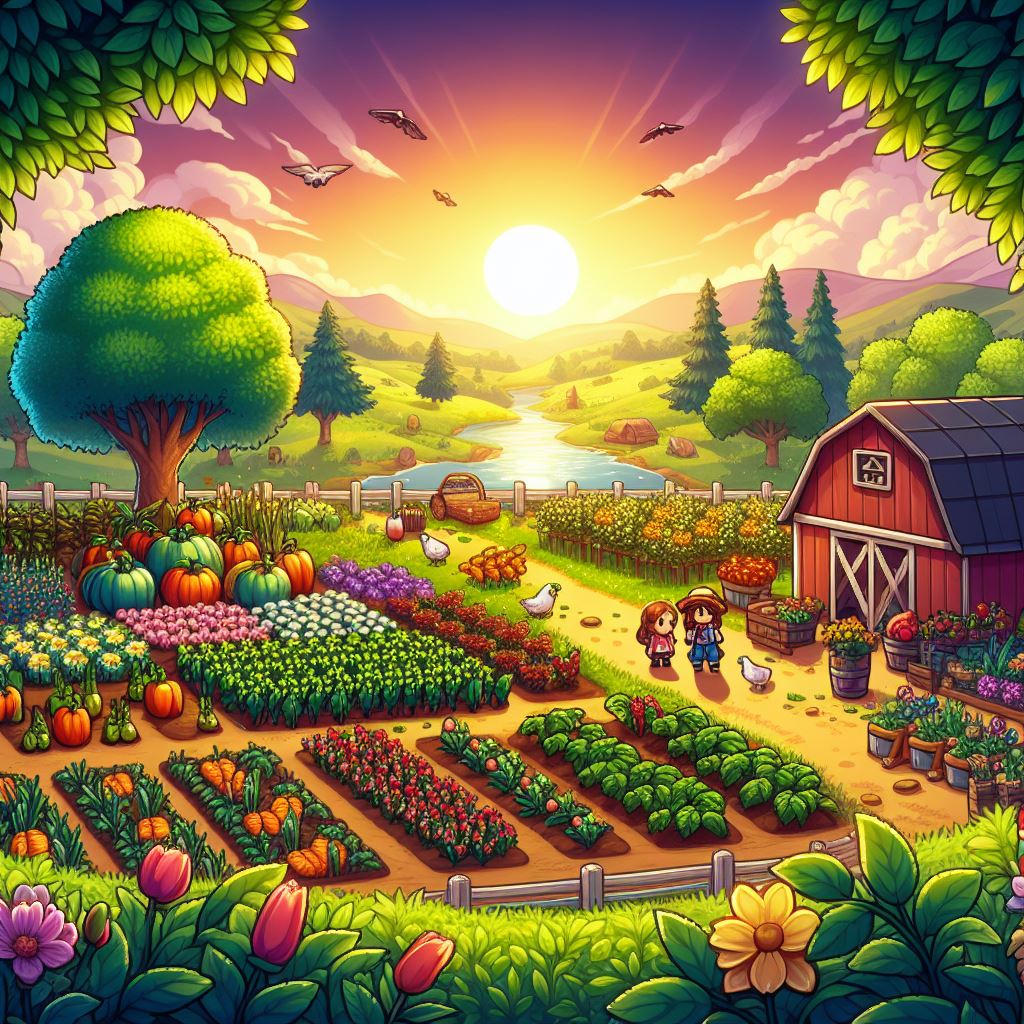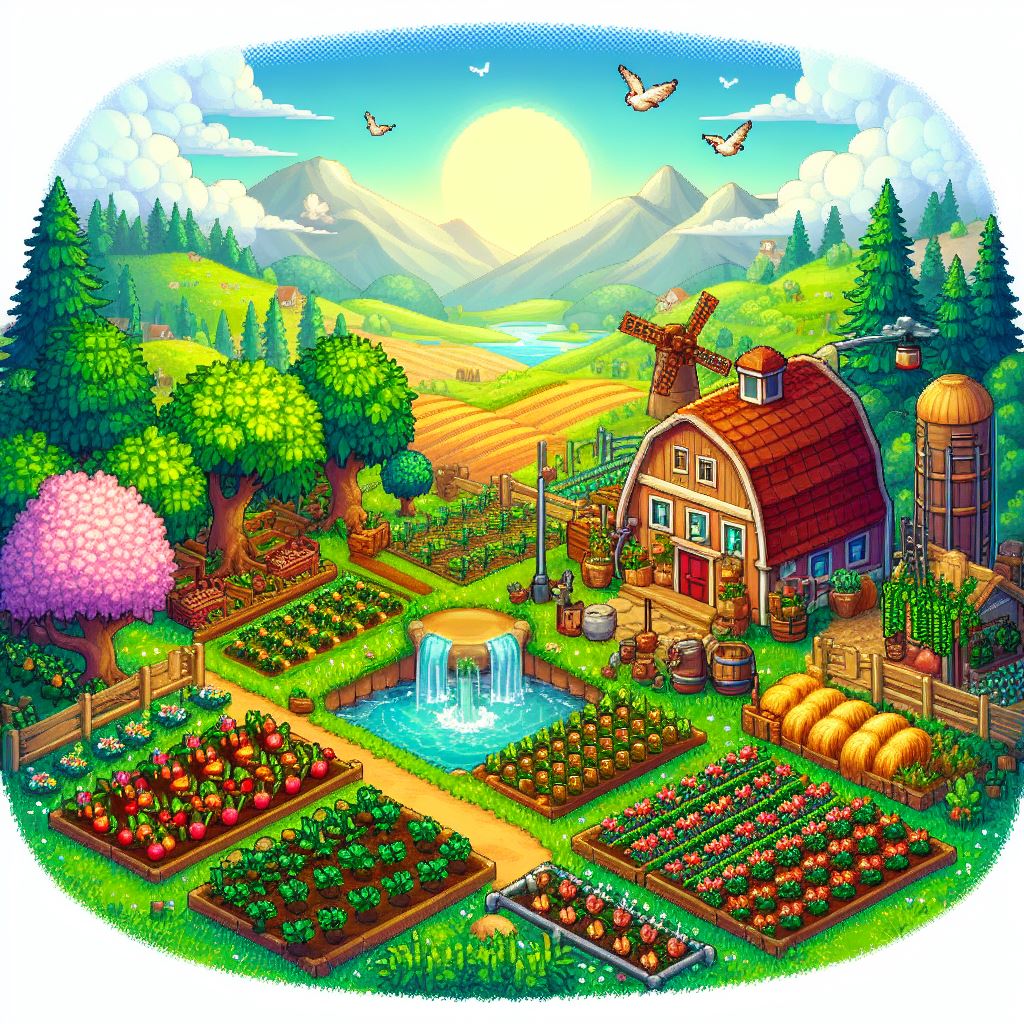Before we delve into the exciting world of best spring crops in Stardew Valley, let’s address a common misconception: the belief that all crops yield the same results. In reality, choosing the right crops for each season can significantly impact your farm’s success. So, let’s debunk this myth and explore the intricacies of crop variety selection.

Understanding Crop Variety Selection
In Stardew Valley, the key to a thriving farm lies in diversity. Just like in real-life farming, planting a variety of crops ensures a balanced ecosystem and maximizes your chances of success. When it comes to spring crops, there are several factors to consider:
- Growth Time: Each crop has its own growth cycle, ranging from a few days to a couple of weeks. Consider the length of the spring season in Stardew Valley and choose crops that can mature within that timeframe.
- Profitability: Some crops fetch higher prices than others. While it’s tempting to focus solely on profits, don’t overlook other factors like yield and resource requirements.
- Soil Health: Continuous planting of the same crop can deplete the soil of nutrients, leading to decreased yields over time. Rotate your crops to maintain soil fertility and prevent pests and diseases.
- Climate and Seasonality: Certain crops thrive in specific weather conditions. Pay attention to the weather forecast in Stardew Valley and choose crops that are well-suited to the current season.
By considering these factors, you can make informed decisions about which spring crops to plant on your farm. Remember, variety is the spice of life – and farming!
Exploring the Top 10 Best Spring Crops for Maximum Profit
Now that we’ve laid the groundwork for crop selection let’s dive into the exciting part: the top 10 best spring crops in Stardew Valley. These tried-and-true winners are guaranteed to boost your harvest and fill your pockets with gold. Here’s a closer look at each crop:

- Strawberries: Known for their high profitability and relatively short growth cycle, strawberries are a favorite among Stardew Valley farmers. Plant them early in the season for maximum yield.
- Rhubarb: This perennial crop may take a while to mature, but its high selling price makes it worth the wait. Once established, rhubarb plants will continue to produce for years to come.
- Green Beans: Ideal for beginner farmers, green beans offer a quick turnaround and consistent yields throughout the season. Plus, they’re a great source of energy for those long days on the farm.
- Cauliflower: While cauliflower takes longer to grow compared to other crops, its hefty price tag more than makes up for the wait. Plant them early and watch your profits soar.
- Potatoes: A staple crop in any farmer’s repertoire, potatoes are reliable, easy to grow, and fetch a decent price at the market. Plus, they can be used in a variety of recipes!
- Kale: This leafy green may not be the most glamorous crop, but its high profitability and continuous harvest make it a worthwhile investment for any farm.
- Garlic: With its unique flavor and medicinal properties, garlic is a valuable addition to any farm. Plant it in early spring for a bountiful harvest later in the season.
- Tulips: Don’t underestimate the power of flowers! Tulips may not be edible, but they’re highly profitable and add a pop of color to your farm.
- Blue Jazz: Another non-edible crop, blue jazz flowers are prized for their beauty and rarity. Plant them in spring and watch as they attract visitors to your farm.
- Parsnips: Last but not least, parsnips are a classic spring crop with a reliable yield and decent selling price. Plant them early to take full advantage of the season.

With these top 10 spring crops in your arsenal, your farm is sure to flourish in Stardew Valley. Stay tuned for more tips and strategies to maximize your profits and become a master farmer!
Dispelling Myths About Maximizing Profits with Spring Crops
Contrary to popular belief, achieving maximum profits with best spring crops in Stardew Valley isn’t just about planting and waiting for the money to roll in. It requires strategic planning, careful execution, and a dash of creativity. So, let’s debunk the myth that success in farming solely depends on luck, and dive into the strategies for maximizing profits with spring crops.
Strategies for Maximizing Profits with Spring Crops
- Crop Rotation Techniques: One of the most effective ways to maintain soil health and optimize yields is through crop rotation. Instead of planting the same crops in the same spot season after season, rotate your crops to replenish soil nutrients and prevent the buildup of pests and diseases. For example, alternate between legumes and leafy greens to fix nitrogen levels in the soil and promote healthy growth.
- Companion Planting Tips: Certain crops thrive when planted together, thanks to their complementary characteristics. For instance, planting marigolds alongside tomatoes can repel pests and improve soil quality, leading to healthier plants and higher yields. Experiment with different companion planting combinations to find what works best for your farm.
- Timely Planting and Harvesting: In Stardew Valley, timing is everything. Planting your crops at the right time ensures optimal growth and maximum yields. Consult the in-game calendar to determine the best planting dates for each crop, taking into account factors like weather patterns and crop maturity rates. Additionally, harvesting your crops promptly prevents them from wilting and maintains their freshness, increasing their market value.
- Optimizing Resource Allocation: Balancing resource allocation is crucial for maximizing profits in Stardew Valley. Invest in high-quality seeds, fertilizers, and tools to boost crop yields and reduce wastage. Prioritize crops with high profitability and efficient growth cycles to make the most of your resources and maximize returns on investment.

By implementing these strategies, you can enhance the profitability of your spring crops and take your farming endeavors to new heights in Stardew Valley. Remember, success doesn’t happen overnight – it requires patience, perseverance, and a willingness to adapt to changing circumstances. Stay tuned for more expert tips and insights to help you become a master farmer in Stardew Valley!
Dispelling Misconceptions About Beginner’s Challenges with Spring Crops
Despite what some may think, diving into best spring crop farming in Stardew Valley as a beginner doesn’t have to be overwhelming. While it’s true that farming requires dedication and knowledge, there are plenty of resources and tips available to help newcomers succeed. Let’s debunk the myth that farming in Stardew Valley is reserved for experienced players, and explore some beginner-friendly tips for getting started with spring crops.
Tips for Beginners: Getting Started with best Spring Crops
- Simplified Planting Guide: If you’re new to farming in Stardew Valley, don’t fret – it’s easier than you think! Start by familiarizing yourself with the basics of planting, watering, and harvesting crops. Use the in-game journal or online guides to learn about each crop’s growth requirements and optimal planting conditions. With a little practice, you’ll soon become a pro at planting spring crops.
- Budget-Friendly Crop Options: As a beginner farmer, it’s essential to make smart choices when selecting crops for your farm. Focus on budget-friendly options that require minimal investment but offer decent returns. Crops like potatoes, parsnips, and green beans are affordable, easy to grow, and perfect for beginners looking to turn a profit without breaking the bank.
- Common Mistakes to Avoid: Every farmer makes mistakes – it’s all part of the learning process. However, by being aware of common pitfalls, you can avoid unnecessary setbacks and streamline your farming journey. Some common mistakes to watch out for include overplanting, neglecting crop maintenance, and mismanaging resources. Take your time, plan ahead, and don’t be afraid to seek advice from seasoned farmers in the Stardew Valley community.
- Continuous Learning and Improvement: Farming in Stardew Valley is a dynamic and ever-evolving experience. Embrace the journey of continuous learning and improvement by experimenting with different crops, techniques, and strategies. Keep track of your progress, take note of what works and what doesn’t, and don’t be afraid to adapt your approach as you gain experience.
By following these beginner-friendly tips, you’ll be well on your way to building a successful farm and mastering the art of best spring crop farming in Stardew Valley. Remember, every farmer starts somewhere – so don’t be discouraged by setbacks and keep pushing forward. Happy farming!

I just could not depart your web site prior to suggesting that I really loved the usual info an individual supply in your visitors? Is gonna be back regularly to check up on new posts.
Thank you so much for your humble opinion.